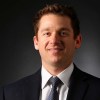Investor in failed Las Vegas Strip Ferris wheel project taking ownership
After spending a fortune on an abandoned Ferris wheel project on the Strip, a Seattle-area investor is taking ownership of the blighted property.
U.S. Bankruptcy Judge Gary Spraker approved plans Monday for businessman Wayne Perry to acquire the SkyVue site and nearby parcels with a $75 million credit bid, giving him nearly 20 acres along the south Strip across from Mandalay Bay, court records show.
As part of the bankruptcy, a Los Angeles investor also bought a nearby apartment complex that was owned by SkyVue developer Howard Bulloch for $15.6 million, and the owners of a North Dakota tribal casino acquired a vacant lot across from the rental property for $12 million, records show.
All told, the deals chop up ownership of a chunk of real estate along Las Vegas’ famed casino corridor.
‘Financially impossible’
The centerpiece of the property, SkyVue was envisioned as a $100 million-plus project with a 500-foot-tall observation wheel, a roller coaster, and retail and restaurant space. Today, the project consists of little more than two giant concrete columns sticking out of the ground.
It’s unclear what Perry would do with the property, especially now that the coronavirus pandemic has devastated Las Vegas’ tourism-dependent economy.
Perry — who put tens of millions of dollars’ worth of loans and investments into SkyVue, according to court records — did not respond to requests for comment.
Colliers International broker Mike Mixer, who worked on the bankruptcy auction, said Perry did not indicate his plans for the site.
“We’re all curious,” Mixer said.
Bulloch and partner David Gaffin owned 38.5 acres of real estate along the south Strip, but the spread came up for sale this year through bankruptcy court. It was offered in whole or in pieces.
Vacant parcels on the Strip have traded hands in recent years. But sales weren’t brisk even before the coronavirus outbreak upended daily life, and the tourist corridor had a spotty track record of resort development coming out of the Great Recession.
According to Mixer, several bidders looked to buy the entire property and build “grandiose” projects similar to what Las Vegas has seen in the past.
“That certainly proved to be financially impossible, especially after COVID hit,” he said.
Bulloch and Gaffin, operators of Compass Investments, did not respond to a request for comment this week.
‘An investment for us’
Despite the turmoil from the pandemic, buyers picked up some parcels through the bankruptcy auction.
Edward Kim, of Ed-Den Investment Co., bought The Oasis apartment complex, records show. The 128-unit complex is fully occupied, said Las Vegas broker Alberto “AJ” Jauregui, who represented Kim in the deal
The complex has a “tremendous amount of deferred maintenance,” but the new landlord is “spending a ton of money” to refurbish it, said Jauregui, owner of Nevada Land Commercial Real Estate.
Meanwhile, the Mandan, Hidatsa and Arikara Nation — also known as the Three Affiliated Tribes of the Fort Berthold Indian Reservation — purchased an 8.7-acre lot through the bankruptcy.
MHA Nation Chairman Mark Fox, whose group operates the 4 Bears Casino in North Dakota, said he had been eyeing activity in Las Vegas for years.
“It’s an investment for us, plain and simple,” Fox said, adding his group has no concrete plans for the property.
Bulloch has been involved with the south Strip for years. By 2001, he and partners had drawn up plans for the 77-acre World Port Resorts project across from Mandalay Bay. It was never built.
In 2011, he announced that the Skyvue Las Vegas Super Wheel, as it was then called, was “about to get off the ground” and expected to be finished in 2013.
The project, however, reportedly ran into financial problems and was never completed.
Contact Eli Segall at esegall@reviewjournal.com or 702-383-0342. Follow @eli_segall on Twitter.






















